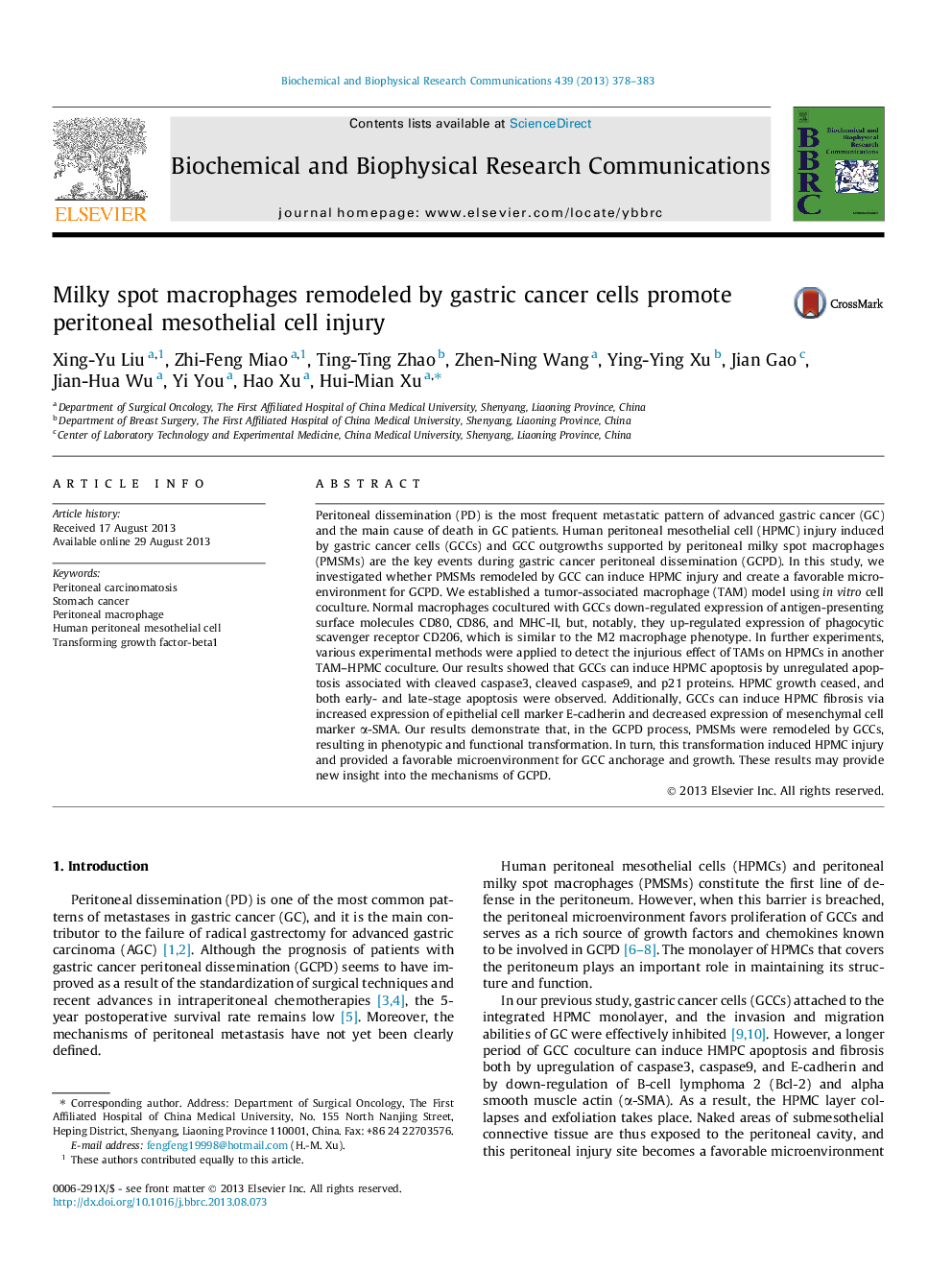| Article ID | Journal | Published Year | Pages | File Type |
|---|---|---|---|---|
| 10758154 | Biochemical and Biophysical Research Communications | 2013 | 6 Pages |
Abstract
Peritoneal dissemination (PD) is the most frequent metastatic pattern of advanced gastric cancer (GC) and the main cause of death in GC patients. Human peritoneal mesothelial cell (HPMC) injury induced by gastric cancer cells (GCCs) and GCC outgrowths supported by peritoneal milky spot macrophages (PMSMs) are the key events during gastric cancer peritoneal dissemination (GCPD). In this study, we investigated whether PMSMs remodeled by GCC can induce HPMC injury and create a favorable microenvironment for GCPD. We established a tumor-associated macrophage (TAM) model using in vitro cell coculture. Normal macrophages cocultured with GCCs down-regulated expression of antigen-presenting surface molecules CD80, CD86, and MHC-II, but, notably, they up-regulated expression of phagocytic scavenger receptor CD206, which is similar to the M2 macrophage phenotype. In further experiments, various experimental methods were applied to detect the injurious effect of TAMs on HPMCs in another TAM-HPMC coculture. Our results showed that GCCs can induce HPMC apoptosis by unregulated apoptosis associated with cleaved caspase3, cleaved caspase9, and p21 proteins. HPMC growth ceased, and both early- and late-stage apoptosis were observed. Additionally, GCCs can induce HPMC fibrosis via increased expression of epithelial cell marker E-cadherin and decreased expression of mesenchymal cell marker α-SMA. Our results demonstrate that, in the GCPD process, PMSMs were remodeled by GCCs, resulting in phenotypic and functional transformation. In turn, this transformation induced HPMC injury and provided a favorable microenvironment for GCC anchorage and growth. These results may provide new insight into the mechanisms of GCPD.
Keywords
Related Topics
Life Sciences
Biochemistry, Genetics and Molecular Biology
Biochemistry
Authors
Xing-Yu Liu, Zhi-Feng Miao, Ting-Ting Zhao, Zhen-Ning Wang, Ying-Ying Xu, Jian Gao, Jian-Hua Wu, Yi You, Hao Xu, Hui-Mian Xu,
